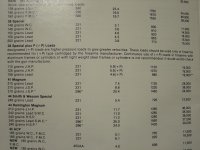What is the need for +P loads?
Just askin

There is no "need" for any of the particular loads with the dozens of powders and hundreds of combinations possible in all the bullet/caliber choices.
The loading manuals show the result of testing of many combinations that fell within "safe in modern arms", and it is up to the loader to select what he/she wants to use. There is no magic "best", and many myths abound in loading, like "the lowest max pressure is always best."
For example, I shot a barely +P .38 to make minor power for decades (until IDPA lowered their power factor requirement to match commercial 130gr ammo), but a +P .38 in a Model 66 is still WAY below the pressure rating of the .357 revolver. Why burn twice as much of a slow powder, which increases the recoil, costs more, and leaves more powder residue? No .38 spl cartridge loaded to SAAMI specs comes close to stressing a .357 revolver.
The truth is, many powders don't really burn well with low pressures in .38s, but settle down and give good performance when the pressure gets into the upper range. Ask anyone who tried loading their light target wadcutters with Blue Dot.
Internal ballistics are very complicated, and that's why we use loading charts.
And in spite of the term being used often, as above, there is no such thing as "+P velocities." +P is a PEAK PRESSURE term, and does NOT correlate directly with bullet speed. I can load a cartridge with a fast shotgun powder so overpressure it will turn your gun into a hand grenade before the bullet reaches the speed easily achieved with say, Universal powder loaded to safe pressures.
Look at the shapes of the total pressure curve:
pressure curve in pistols - Bing images
A wide flat curve gives more speed than a sharp peaked curve, at the same max pressure.

